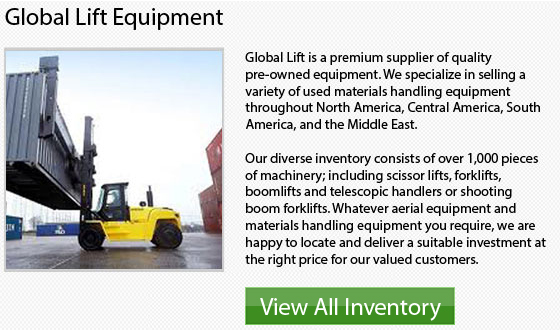
The counterbalanced forklift is a lift truck which uses a counter balance which is connected to the back end of the machine. This counterbalance effectively balances loads which are placed on the tines at the front end of the equipment. This design is engineered to stabilize traditional lift trucks. As far as electric counterbalance forklifts are concerned, the battery itself forms the counterweight.
Counterbalance lift trucks could often be found in every manufacturer's product range. They are typically manufactured in a range of sizes and configurations, using a range of fuel sources. These forklifts could with solid or pneumatic tires, and be designed with 3 or 4 wheels. They are capable of working in various applications. These kinds of lift trucks are outfitted with a range of accessories. Common options and attachments consist of: side shifts, hydraulic clamps, slip sheet attachments and fork shifts just to name a few.
Counterbalance forklifts have revolutionized the material handling industry. They have become the cornerstone of distribution and storage systems where they perform loading, stacking, unloading and horizontal transport functions. The average warehouse forklifts are normally utilized for lift heights under 20 feet or 6 meters. There have been some units recently designed which can lift to heights 9.5 meters or 31 feet. The smaller 1-1.8 ton or 4000 lbs. forklifts are the main workhorses within the majority of warehouses. These are the most common models that most small businesses will own. The average warehouse counterbalance forklift is really a wide-aisle truck which requires roughly 3 meters or 11 feet to turn in.
Additionally, the counterbalanced lift truck is not necessarily limited to warehouse settings. They are normally used for container carrying and heavy use along with pretty much every use in between. Counterbalance forklifts are the most widely used and versatile of all materials handling equipment.
The counterbalanced lift truck is common in many working environments, like production, retail and warehousing. This is due to their versatility and durability. Some of the industrial applications include: timber, automotive, food and chemical industries.